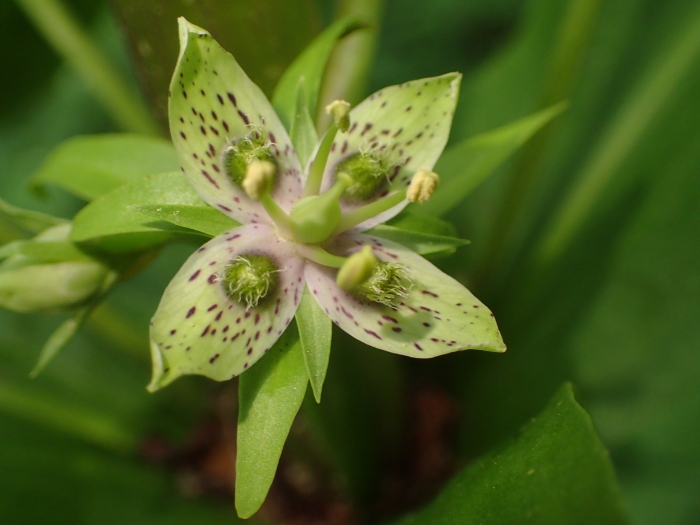American Columbo
(Frasera caroliniensis)
American Columbo (Frasera caroliniensis)
/
/

George Williams
CC BY 4.0
Image By:
George Williams
Recorded By:
Copyright:
CC BY 4.0
Copyright Notice:
Photo by: George Williams | License Type: CC BY 4.0 | License URL: http://creativecommons.org/licenses/by/4.0/ | Rights Holder: George Williams | Publisher: iNaturalist | Date Created: 2023-06-10T09:46:58-07:00 |

























Estimated Native Range
Summary
Frasera caroliniensis, commonly known as American Columbo, is a monocarpic perennial herb native to the understory of deciduous forests and dry upland areas in the eastern and southeastern United States, as well as Southern Ontario. It can reach up to 7 feet in height and features a rosette of lanceolate leaves. The plant produces a striking panicle of green to yellow flowers with purple speckles, which bloom in late spring to early summer. The flowers are not particularly showy but are interesting upon close inspection. American Columbo is adapted to rocky woods and is often found in the company of sweet-gum (Liquidambar styraciflua), tulip tree (Liriodendron tulipifera), and pignut hickory (Carya glabra).
American Columbo is valued for its ecological role rather than for ornamental purposes. It provides habitat and food for various insects and birds within its native ecosystem. In cultivation, it requires minimal maintenance, thriving in well-drained soils with low to moderate moisture and in full sun to part shade conditions. While not commonly used in gardens, it can be an interesting addition to native plant gardens or restoration projects. Its historical medicinal use is largely obsolete, but it remains a plant of interest for its unique life cycle and ecological contributions. Care should be taken as it can be sensitive to overwatering and root disturbance.CC BY-SA 4.0
American Columbo is valued for its ecological role rather than for ornamental purposes. It provides habitat and food for various insects and birds within its native ecosystem. In cultivation, it requires minimal maintenance, thriving in well-drained soils with low to moderate moisture and in full sun to part shade conditions. While not commonly used in gardens, it can be an interesting addition to native plant gardens or restoration projects. Its historical medicinal use is largely obsolete, but it remains a plant of interest for its unique life cycle and ecological contributions. Care should be taken as it can be sensitive to overwatering and root disturbance.CC BY-SA 4.0
Plant Description
- Plant Type: Herb
- Height: 1-7 feet
- Width: 2-3 feet
- Growth Rate: Slow
- Flower Color: Green, Purple, White
- Flowering Season: Spring, Summer
- Leaf Retention: Deciduous
Growth Requirements
- Sun: Full Sun, Part Shade
- Water: Medium, High
- Drainage: Slow
Common Uses
Bee Garden, Butterfly Garden
Natural Habitat
Understory of deciduous forests and dry upland areas in the eastern and southeastern United States, as well as Southern Ontario
Other Names
Common Names: Pyramid Plant, Yellow Gentian
Scientific Names: , Frasera caroliniensis, Swertia carolinensis,
GBIF Accepted Name: